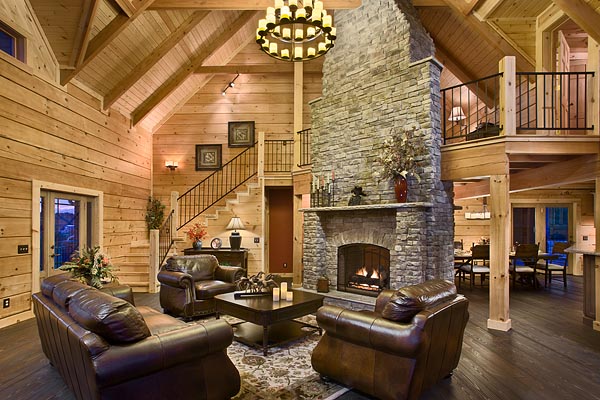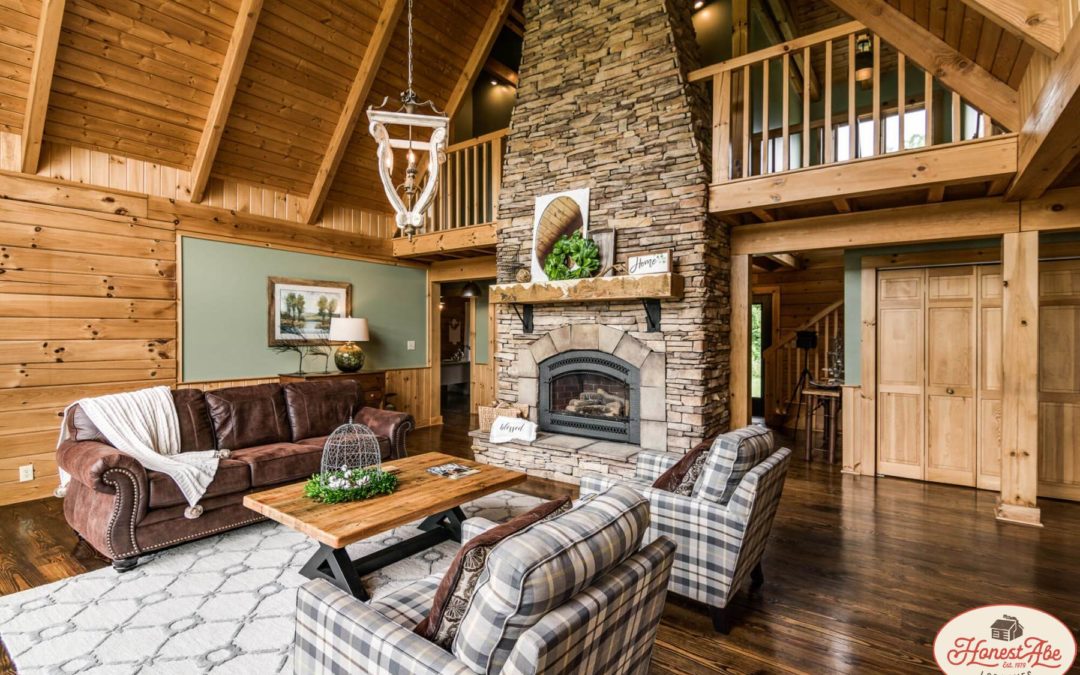The idea of designing heating and cooling systems that do not rely on the electric or gas company is appealing to many log home and timber frame home owners. There are several options for off-grid heating and cooling that can be used in a variety of settings, including homes, cabins, and other structures. Here are a few ideas:
Solar heating: Using solar panels or collectors to capture energy from the sun, this type of system can be used to heat water or air for your home.
Geothermal heating and cooling: This type of system uses the constant temperature of the earth to heat and cool your home. A geothermal heat pump is installed underground, and a series of pipes circulate a water and antifreeze mixture to transfer heat to and from the earth.
Wood-burning stove: A wood-burning stove can be used to heat your home, and can also be used to cook food.
Passive solar design: This type of design involves using the sun’s energy to naturally heat and cool your home. Strategies can include using south-facing windows to allow sunlight to enter the home and using thermal mass materials to absorb and store heat.
Air source heat pump: This type of system uses electricity to transfer heat between the inside and outside of your home. It can be used for both heating and cooling.
Evaporative cooling: This type of system uses the process of evaporation to cool the air. Water is evaporated into the air, which cools the air and increases humidity. This can be an effective cooling method in dry climates.
The cost effectiveness of different off-grid heating and cooling methods will depend on a variety of factors, including the location and climate of your home, the availability and cost of resources, and the initial cost of installing the system.
Some methods may be more cost effective in certain locations or under certain circumstances. For example:
- Solar heating can be a cost-effective option in sunny locations with high electricity costs.
- Geothermal heating and cooling can be a cost-effective option in areas with stable ground temperatures and a high initial installation cost.
- Wood-burning stoves can be a cost-effective option in areas with access to inexpensive wood.
- Passive solar design can be a cost-effective option in locations with plenty of sunlight and a well-designed home.
- Air source heat pumps can be a cost-effective option in areas with moderate climates and access to electricity.
- Evaporative cooling can be a cost-effective option in dry climates with low humidity.
It’s important to carefully consider all of these factors and do your research before choosing an off-grid heating and cooling system. Consulting with a professional or an energy specialist can also be helpful in determining the best option for your specific situation.

Use the Expertise of an Energy Specialist
There are several ways you can find an energy specialist to help you design an energy-efficient home or choose an off-grid heating and cooling system.
Local utility company: Many local utility companies have energy specialists who can provide information and assistance on energy-efficient home design and renewable energy options.
Professional organizations: There are many professional organizations that represent energy specialists, such as the Association of Energy Engineers or the National Renewable Energy Laboratory. These organizations may be able to help you find an energy specialist in your area.
Home performance contractors: Home performance contractors specialize in improving the energy efficiency of homes. They can assess your home and recommend energy-efficient upgrades and renovations.
Online directories: There are many online directories that list energy specialists, such as the Department of Energy’s Home Energy Pros directory or the Energy Star directory of certified professionals.
It’s a good idea to research potential energy specialists and read reviews or ask for references before hiring one. You may also want to consider consulting with multiple energy specialists to get a range of opinions and recommendations.
– article by Honest Abe Log Homes, ©2023




